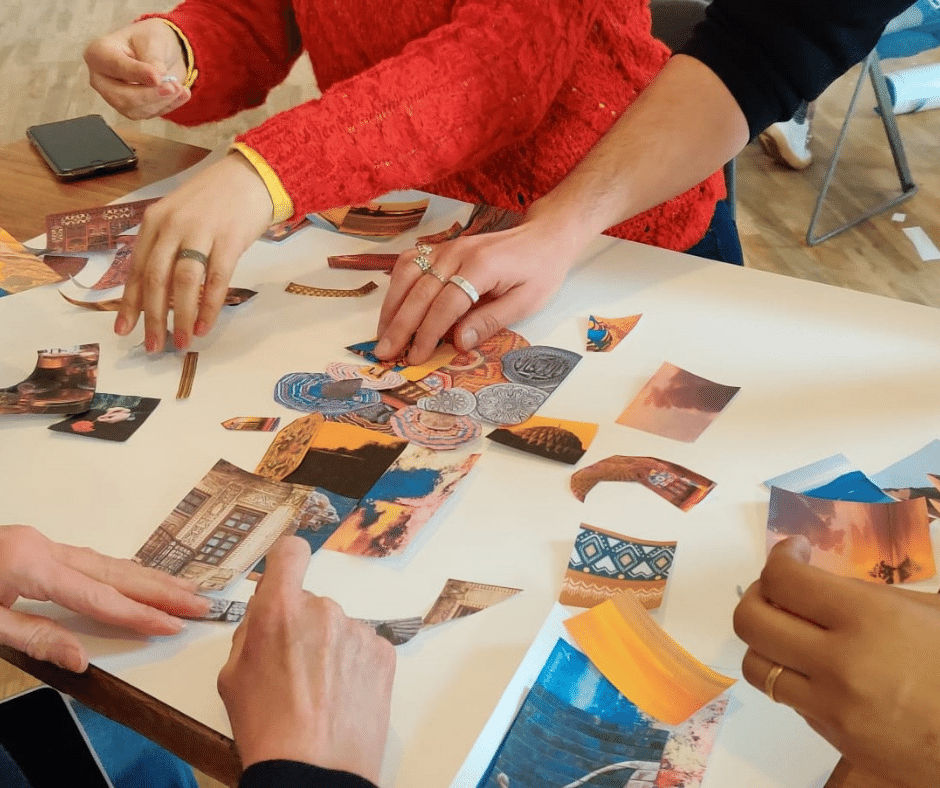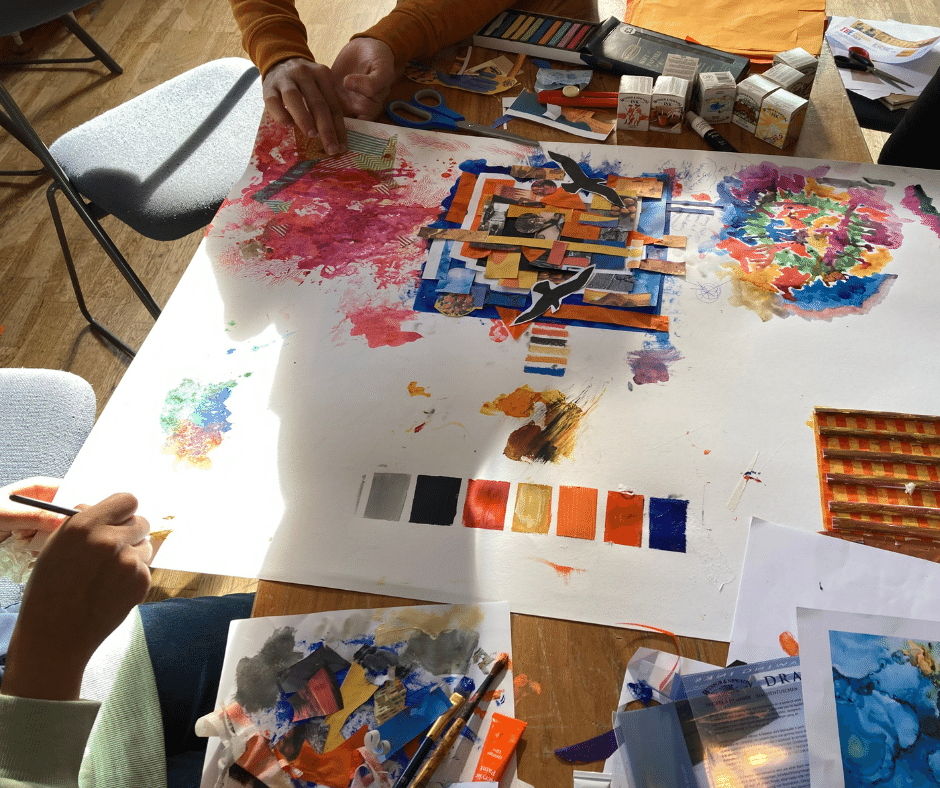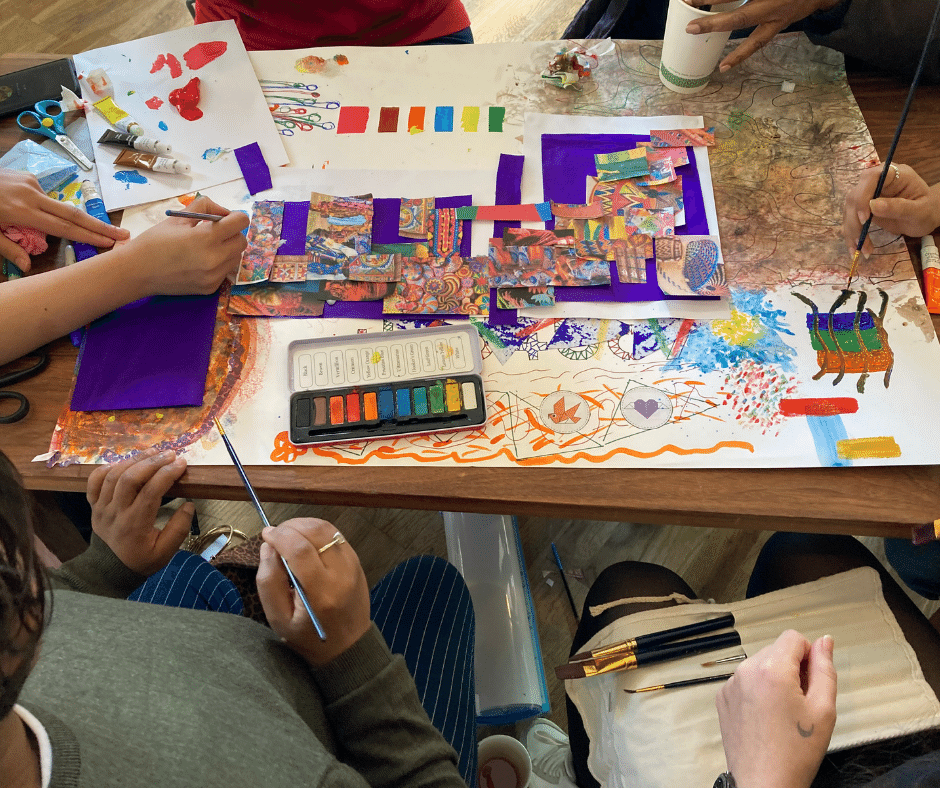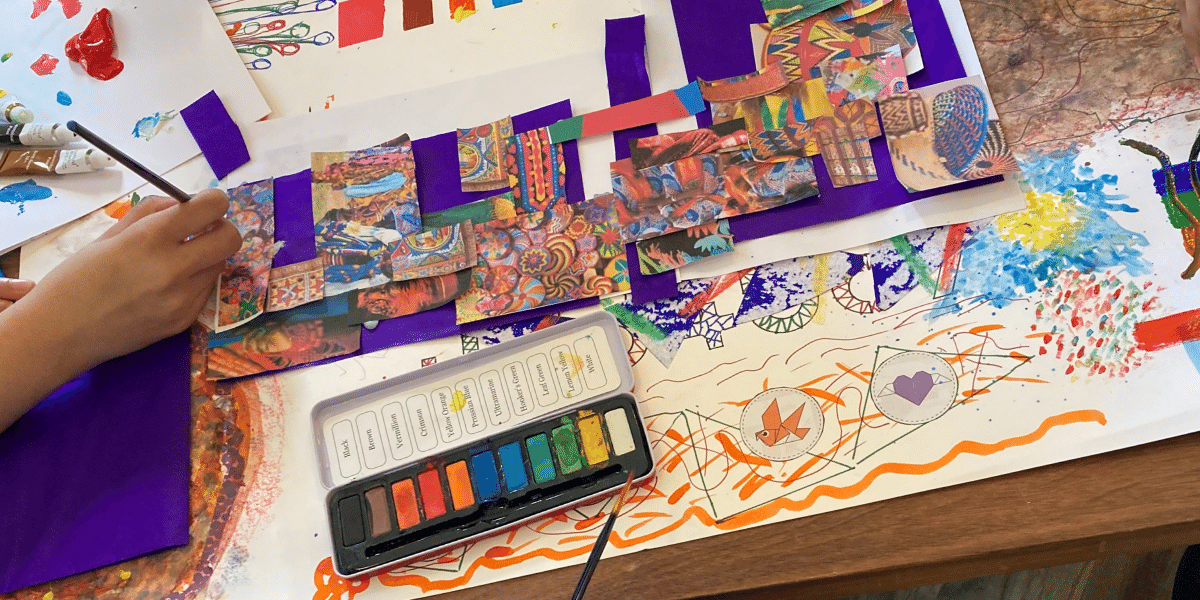This year, the branding for Refugee Festival Scotland is being designed by a very special group of artists from refugee backgrounds.
The Museum of Things is a collective of 25 people from 12 nationalities, brought together by their stories of refugeehood and their shared love of art. Some members trained as architects, designers, animators, photographers and tattoo artists in their home countries. Others only picked up a paintbrush for the very first time this year.
 The project, run by Maryhill Integration Network, began in February 2021 as a way of helping people stay connected during lockdown. By offering a creative outlet, Museum of Things gives refugees and people seeking asylum a sense of belonging, making it easier for them to face the challenges caused by the pandemic and the hostile environment.
The project, run by Maryhill Integration Network, began in February 2021 as a way of helping people stay connected during lockdown. By offering a creative outlet, Museum of Things gives refugees and people seeking asylum a sense of belonging, making it easier for them to face the challenges caused by the pandemic and the hostile environment.
They meet once a week to share skills, ideas and cultural heritage through a variety of artistic approaches and techniques. We caught up with the Museum of Things at one of their regular sessions to see how the designs for this year’s festival are unfolding.
Participants formed three groups and each was working on a mood board that tells their collective stories through pictures, patterns and colours representing the cultures, heritage and traditions of their homelands. Lead artists, Paria Goodrazi and Mousa AlNana showed us around.
Paria explained: “Today, each of the three groups is working together to translate their ideas onto paper. There is so much talent in this room, so many artists from all around the world. This is their opportunity to share their skills, knowledge and culture with others.”
Mousa added: “We’re going to take colours and elements from each of the different groups to create our final design. Every person in the group will contribute to that process.”
Meeting Museum of Things members
 Omar is one of the newest members of the Museum of Things. He told us: “My twin brother knows that I’m into art, so he suggested I get involved. I love it! People are sharing their ideas without hesitation.
Omar is one of the newest members of the Museum of Things. He told us: “My twin brother knows that I’m into art, so he suggested I get involved. I love it! People are sharing their ideas without hesitation.
“I’m looking forward to learning more with the group. I’m looking forward to sharing my skills and my journey. I want people to know my art. It will be amazing to see our poster. It’s a great opportunity. I wouldn’t have had this opportunity in my home country.”
As each group worked on their mood board, we took the opportunity to speak to some of the participants about their new project.
Group 1
“We feel very happy when we heard we would be designing the poster for the festival. No one sees our work, but with this poster, all the people around Glasgow will see our work.”
Group 2
 “The pictures [on our mood board] are from our cultures – Eritrea, Yemen, Pakistan, Iraq. Every photo is a story. When we put all our pictures together we found there were common threads.
“The pictures [on our mood board] are from our cultures – Eritrea, Yemen, Pakistan, Iraq. Every photo is a story. When we put all our pictures together we found there were common threads.
“Seeing how the pictures come together, we see that we come from different places but we are not too different from each other. We brought similar colours and patterns. Everyone has a story and a journey. The lines show our travels, where we started and where we are going.
“We come from countries with rich histories and cultures and we bring elements of each together to show a common picture – a shared story.”
Group 3
“In this group there are a lot of different cultures. We bring all that together and what it makes is very beautiful. It’s like a flower opening.
“Art is very good for the soul. It connects people and brings them together. Every person is an artist. Everybody has art within them.
“When I think about art, I know peace. It’s very good for us. I’m so happy that I’m coming here.”
